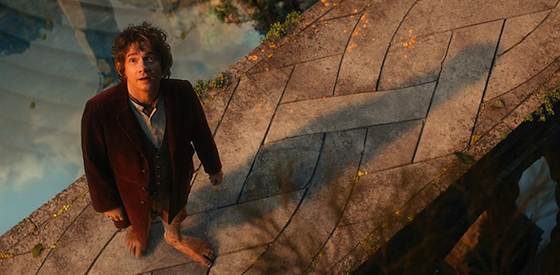- MENU
- HOME
- SEARCH
- WORLD
- MAIN
- AFRICA
- ASIA
- BALKANS
- EUROPE
- LATIN AMERICA
- MIDDLE EAST
- United Kingdom
- United States
- Argentina
- Australia
- Austria
- Benelux
- Brazil
- Canada
- China
- France
- Germany
- Greece
- Hungary
- India
- Indonesia
- Ireland
- Israel
- Italy
- Japan
- Korea
- Mexico
- New Zealand
- Pakistan
- Philippines
- Poland
- Russia
- South Africa
- Spain
- Taiwan
- Turkey
- USA
- BUSINESS
- WEALTH
- STOCKS
- TECH
- HEALTH
- LIFESTYLE
- ENTERTAINMENT
- SPORTS
- RSS
- iHaveNet.com: Movie Reviews

2 1/2 stars
"The Hobbit," the first of three movies to be yanked out of J.R.R. Tolkien's single novel, comes from
It's a moderately engaging launch to the adventures of Bilbo Baggins, the homey fellow temperamentally ill-suited to quests involving dragons and goblins and orcs. The many-hands screenplay by Jackson, Guillermo del Toro (originally slated to direct), Fran Walsh and Philippa Boyens takes its sweet time getting Bilbo, played with touching vulnerability by Martin Freeman, out of his hobbit hole and on the road. His comrades in the quest are the wizard
Jackson's camera technique remains what it was throughout the "Lord of the Rings" movies: a rolling, gliding, tastefully restless observer of both conversations and battles en route to Erebor and the fearsome dragon known as Smaug. Several actors from the "Rings" trilogy reappear and punch the clock for duty, including Cate Blanchett as Galadriel, Ian Holm as Old Bilbo and, most valuably, Andy Serkis as Gollum.
This brings us to one of the two scenes lifting "The Hobbit" out of its own comfortable groove. The famous riddle sequence, pitting Bilbo against the bearer of a very, very important ring, introduces Gollum into the story. In Tolkien's novel, the scene runs about 30 pages; on-screen it runs a generous but apt and richly developed 10 minutes. For a while, we forget about all the digital amazements and relax into the characters.
The other standout is pure showmanship: the slugfest between the storm giants -- actual mountain men, made of rock. Unlike other battle scenes in "The Hobbit," this one doesn't wear out its welcome; it's brief and to the point.
Jackson, shooting digitally, has upped the ante with the most noteworthy and controversial element of "The Hobbit." He has photographed the picture in 3-D (no big advance there) but at 48 frames per second as opposed to the standard 24. What does this alleged selling point look like? "The Hobbit" in the 48 format resembles an incredibly high-definition simulcast of "The Metropolitan Opera Live from Middle-earth." I hate it. It looks like test footage, devoid of warmth and texture, and when backed by the
Extracting three generously proportioned films from Tolkien's books made sense. But turning the relatively slim 1937 volume "The Hobbit" into a trilogy, peddling seven or eight hours of cine-mythology, suggests a better deal for the producers than for audiences. When, in Jackson's film, someone describes a character's "love of gold" as having become "too fierce," you wonder if the warning might apply to "The Hobbit" in other ways.
Part two arrives in a year.
MPAA rating: PG-13 (extended sequences of intense fantasy action violence, and frightening images).
Running time: 2:49.
Cast: Martin Freeman (Bilbo Baggins); Ian McKellen (
Credits: Directed by Peter Jackson; written by Jackson, Guillermo del Toro, Fran Walsh and Philippa Boyens, based on the novel by J.R.R. Tolkein; produced by Carolynne Cunningham, Fran Walsh, Peter Jackson and Zane Weiner. A
Copyright © Tribune Media Services, Inc.
The Hobbit: An Unexpected Journey Movie Review - Martin Freeman and Ian McKellen